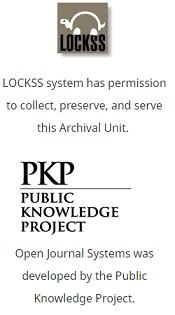Descripción del proceso
Editorial Process
The complete editorial process is described below, with the aim of informing authors in advance about the details of the different phases of the publication cycle.
The guidelines regarding the editorial process also aim to ensure that authors contribute to the proper submission of texts, thereby facilitating the various stages.
Broadly speaking, an article will go through the following five stages:
-
RECEPTION
-
INITIAL SELECTION / PRE-REVIEW
-
REVIEW (proper evaluation)
-
LAYOUT
-
PUBLICATION
For information on the average duration of each phase and of the overall process, please consult the following link.
RECEPTION PHASE
The article is received through the platform. In this phase, several aspects are checked and certain operations are carried out:
a) Submission form data. Verification that the requested metadata in the submission form have been correctly entered. In particular, that the basic elements (title, abstract, and keywords) are provided in two languages. Also, that the keywords have been entered individually so that the system can properly detect them.
b) Author registration data. Verification that all basic information is included, especially those elements essential for the editorial process such as the ORCID and the affiliation of the author(s). A separate file must also be provided.
The platform automatically acknowledges receipt.
PRE-REVIEW / INITIAL SELECTION PHASE
In this phase, the following operations are carried out:
a) Text check using AI and plagiarism detection software. The resulting report will determine whether the text proceeds to evaluation.
b) Decision on the relevance of the text for evaluation. This decision is based on three criteria:
i. Thematic adaptation to the journal. Texts that do not fit the journal’s scope or whose connection is considered forced are excluded.
ii. Compliance with the journal’s basic standards. Texts are excluded if they fail to meet basic requirements such as: article structure, minimum length, formatting issues (particularly citations and bibliographic references, as well as excessive use of URLs in footnotes), high degree of AI use, detected plagiarism, among others.
iii. Interest in relation to the subject matter. Texts lacking interest according to the journal’s criteria are excluded. Generally, the following types are not of interest:
-
Purely descriptive works
-
Literature reviews
-
Case studies of narrowly defined territorial contexts
-
Texts consisting of indicator measurement
-
Studies relying on complex statistical methodologies that would be better suited to other journals
At the end of this phase, an email is sent informing the author(s) of the decision: either to proceed to the next phase or to reject the article.
Additional information on the pre-review phase can be found at the following link.
The pre-review process is expected to be completed within approximately 2 months. The calculation of this period depends on the date the texts are received, since team meetings to decide on doubtful cases are held at the beginning of each odd-numbered month.
REVIEW / EVALUATION PHASE
In this phase, the following operations are carried out:
a) Anonymization. Verification that the file containing the article text is properly anonymized. Necessary deletions are made to ensure an objective evaluation process. Specifically:
-
Removal of metadata identifying the authors.
-
Elimination of references to projects or funding under which the article was prepared (these must appear in the separate author identification document).
-
Removal of self-citations that could reveal the author’s identity.
b) Assignment of the article to reviewers. Evaluation managers select reviewers and monitor the receipt of reports.
c) Decision. Once reports are received, a decision is made regarding the article.
The result will be communicated to the author(s): rejection, conditional pre-acceptance subject to changes, or pre-acceptance pending the final text.
Authors of pre-accepted texts will be asked to submit a final version. In the specific case of conditional pre-acceptance, the journal may request a change report. In all cases, it will be verified whether the changes made are sufficient to proceed to the next phase.
Additional information on the evaluation phase can be found at the following link.
The evaluation process is expected to be completed within approximately 4 months. This period varies depending on the responsiveness of the reviewers.
LAYOUT
A provisional version of the article layout will be prepared and sent to the author(s) for final review or correction of detected errors. At this stage, the journal may suggest improvements, particularly regarding graphics, tables, and other visual elements.
Once corrections or requested changes are received, the final layout will be prepared, and articles will await publication. The journal may decide whether the article is published in the next issue or in subsequent ones, depending on editorial needs.
The layout process may take up to one month. Authors are usually given one or two weeks to proofread.
PUBLICATION
This phase includes all operations necessary to ensure that the texts are properly displayed on the journal’s platform with their corresponding metadata. Once the issue is published, authors will be notified and encouraged to share their texts publicly and to deposit them in repositories they deem appropriate.
The entire process, from submission to publication, usually takes about 9 months. This duration reflects the time required for each phase, plus the accumulation of articles needed to compose each issue.












